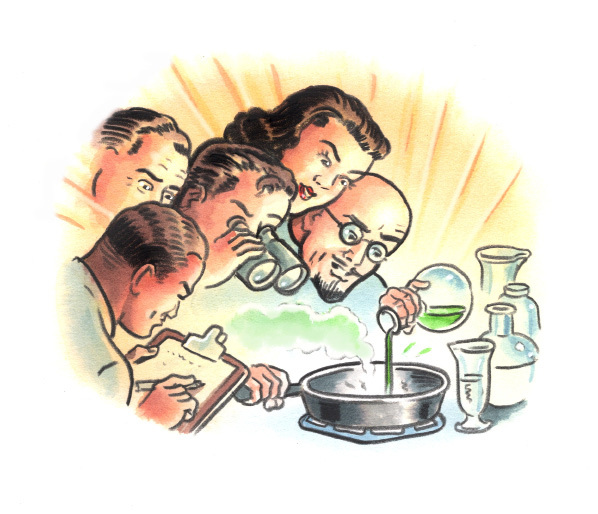
It Pays to Deglaze
Deglazing—or using a liquid to loosen caramelized bits of food from a pan—can be a crucial step in flavor-building. The liquid used can vary widely, depending on the recipe, prompting our listeners to ask: Do certain liquids deglaze better than others?
When food—especially meat—is cooked at a high temperature, deeply flavorful browned bits end up stuck to the pan. This is what’s known as fond, and it never should be discarded. Those caramelized bits are flavor gold, capable of contributing incredible depth to broths, gravies, sauces, braises and more. Deglazing helps release these bits. To find out if certain liquids are more effective than others, we deglazed our pans with room-temperature lemon juice, wine, broth and water. Initially, we found no difference; all performed well. Hot broth did deglaze pans more quickly than cool, but the difference wasn’t enough to convince us to heat broth purely for deglazing. Also, because wine can be flammable over high heat and citrus juice breaks easily and typically is used in small amounts, heating the liquid works only with broth and water. Ultimately, since any liquid works for deglazing, the choice comes down to flavor. We recommend using liquids other than water, as it’s an opportunity to inject even more flavor into the finished dish.
Lose the Fat
Excess fat can easily ruin a dish, so it’s good to have a reliable technique for separating it from other liquids—a surprisingly tricky task. After struggling with various methods, Marie Louise Griffin, of Playa del Rey, California, asked for advice.
During cooking, heat melts the fat in ingredients such as meats. Particularly in recipes that involve other liquids, such as broth or water, that melted fat pools on top and typically needs to be removed before the dish is served. As fat cools, it tends to resolidify. Because of this, one of the most effective and easiest ways to remove the fat is to chill the entire mixture until the fat hardens and can be scraped off and discarded. But cooling the entire pot can take hours. Looking for a more efficient solution, we tested several methods, including skimmers and ladles (to spoon off the fat), paper towels (to blot it), basters (to siphon the liquid away from the fat) and fat separator devices. The results depended somewhat on the type of recipe. Paper towels performed poorly in almost every case. Basters worked well but are practical only with small volumes (the baster is used to siphon the liquid out from under the fat). Fat separators (which work by allowing the liquid to be poured off from beneath the fat) worked best, but they require that the liquid first be strained of any solids. This is fine for broths and stocks, which typically would be strained before use anyway. But straining can be cumbersome with soups and stews. For those, as well as low-liquid braises or any recipe where straining the liquid is not practical, we prefer to use a shallow ladle or serving spoon to carefully skim off the fat from the surface. To make this even easier and more effective, we gently tip the pot to one side so the fat pools, creating a deeper reservoir from which to skim.

Yogurt Marinade Magic
Are yogurt-based marinades the secret to more tender meat? Many recipes suggest so. Our callers were curious to know whether that’s actually the case.
At Milk street, we rarely marinate meat. That’s because most flavor fails to penetrate the meat. The molecules in ingredients such as garlic and herbs are insoluble and therefore merely coat the surface (in which case, you’re better off just flavoring meat with a sauce or glaze during or after cooking). The exception to this is salt and acids, both of which can be effective. Salt draws moisture into meat, while acids help tenderize proteins. This is where yogurt comes in. With a pH of around 4.3 thanks to the presence of lactic acid, yogurt is considered weakly acidic (anything with a pH of less than 7 is an acidic ingredient). Additionally, some studies suggest that the calcium present in yogurt also may play a role in tenderizing. To test this, we marinated steaks (chosen because their color better illustrates how deeply a marinade penetrates) in yogurt for various lengths of time—from brushing it on just before cooking to marinating the meat overnight. Steaks marinated for less than an hour showed little benefit. At three hours, the meat had softened too much, turning almost pasty. But two hours turned out to be the sweet spot, with yogurt-marinated steaks turning out tender but not mushy. We also learned another benefit of yogurt marinades: They stick. Yogurt clings to the meat even once it’s removed from the marinade, imparting flavor during the cooking process. As the dairy caramelizes, it adds even more depth and dimension.






